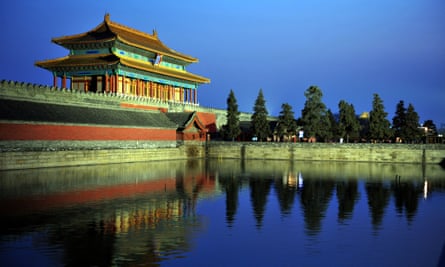The Vatican is to send 40 works of art to China in a cultural exchange amid signs that attempts at rapprochement between the two powers are faltering.
The Vatican museums, home to the Sistine chapel and countless other works of importance, and the China Culture Industrial Investment Fund (CCIIF) announced the exchange initiative in Rome this week. Simultaneous exhibitions will open in March in the Forbidden City in Beijing and the Vatican’s Anima Mundi Museum.
The Vatican is sending 39 works from its collection of Chinese art to be selected by curators. The 40th object, which has yet to be chosen, will be western European Christian. Beijing is offering paintings from the contemporary Chinese artist Zhang Yan among the 40 works it is contributing. It is the first time the Vatican museums and a Chinese cultural institution have collaborated.

Pope Francis has sought to improve relations with Beijing, but efforts have faltered on the Vatican’s insistence that only the pontiff has the authority to appoint Catholic bishops. Beijing sees such a stance as an infringement on its sovereignty.
Greg Burke, the Vatican spokesman, told the Associated Press: “A lot of times cultural exchanges can be a lot easier than strict diplomatic exchanges, and that is what’s happening here.”
At a press conference, Barbara Jatta, director of the the Vatican museums, said: “Beauty … is the key to what the Vatican museums calls ‘the diplomacy of art’, which is certainly not our discovery … but which today is up to us to carry forward and creatively reinterpret in a constant confrontation with the global scene that is in front of us.”
Zhu Jiancheng, the head of the CCIIF, said the exchange crossed borders, time and united cultures, adding: “It will further strengthen the friendship between China and the Vatican in favour of the normalisation of diplomatic relations between China and the Holy See.”
Zhang said the initiative signalled the “strong commitment for the development of civil relations between China and the Vatican”.
The Vatican has 20,000 pieces of Chinese art – including bronzes, ceramics, cloisonne and paintings – in its collection.

China cut relations with the Holy See in 1951 after the Communist party took power in Beijing and set up its own church outside the pope’s authority. China has an estimated 12 million Catholics, many of whom worship in non-state sanctioned congregations faithful to the pope that often overlap with the government-sanctioned church.
Last autumn, it was thought a deal on the appointment of bishops in China was imminent. However, it failed to materialise, and some observers believe it is less likely after the Chinese president, Xi Jinping, tightening his grip on power at the party congress last month.
